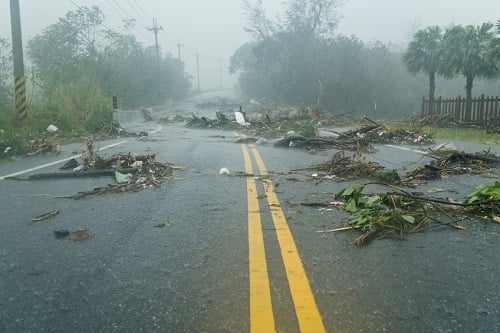When disasters strike, insurers turn to their preferred providers of emergency restoration services to help on the front line and assist with repairs.
In Canada, where natural disasters seem to be coming thick and fast in recent years, FirstOnSite Restoration works with a number of major insurers, including
Intact and
Aviva.
Learn more about natural disasters insurance here.
“We’ve been involved in almost all major catastrophes in Canada,” Kevin Clarke, national executive vice-president of branch operations and senior vice-president – prairies, at FirstOnSite Restoration, told Insurance Business.
In recent years, events such as the Fort McMurray wildfires – which had 70% of its total economic loss covered by insurance – and the 2013 floods in Alberta, stand out as events that the firm worked extensively on.
But Clarke stressed that catastrophes are “going on all the time, they’re just maybe not as large as Fort McMurray,” pointing to wind, thunder and winter storm events, as well as scenarios such as the remnants of the recent Hurricane Matthew.
Want the latest insurance industry news first? Sign up for our completely free newsletter service now.
And while catastrophe events are a mainstay, they appear to be increasing in their frequency in Canada, Clarke admitted.
“They seem to be continually happening, and they seem to be larger events,” he commented. “So there does seem to be with the weather patterns, a higher frequency of [catastrophe] claims occurring.”
In light of that, insurers increasingly want to make sure that the disaster restoration firms they work with are ready to service them in the event of a catastrophe, so that they in turn can properly serve their insureds.
“We spend a lot of time discussing with [insurers] our mobilisation capacities and sourcing equipment, movement of manpower and how quickly can we respond, how many people will we have ready,” Clarke said. “It’s a proactive approach with our partners.”
The company, which has 37 sites across Canada, has invested heavily in in-house technology as expectation from clients continues to grow taller – from reduced cycle time to increased claims transparency.
But much of the workload continues to involve regular talks and planning meetings, discussing the logistics for issues such as sourcing equipment, accommodation and power supplies.
“It’s all in the pre-planning so when the moment comes, we can execute,” Clarke added.
Related stories:
Fort McMurray in top 10 worst insured losses globally
Federal government invests in disaster mitigation fund


